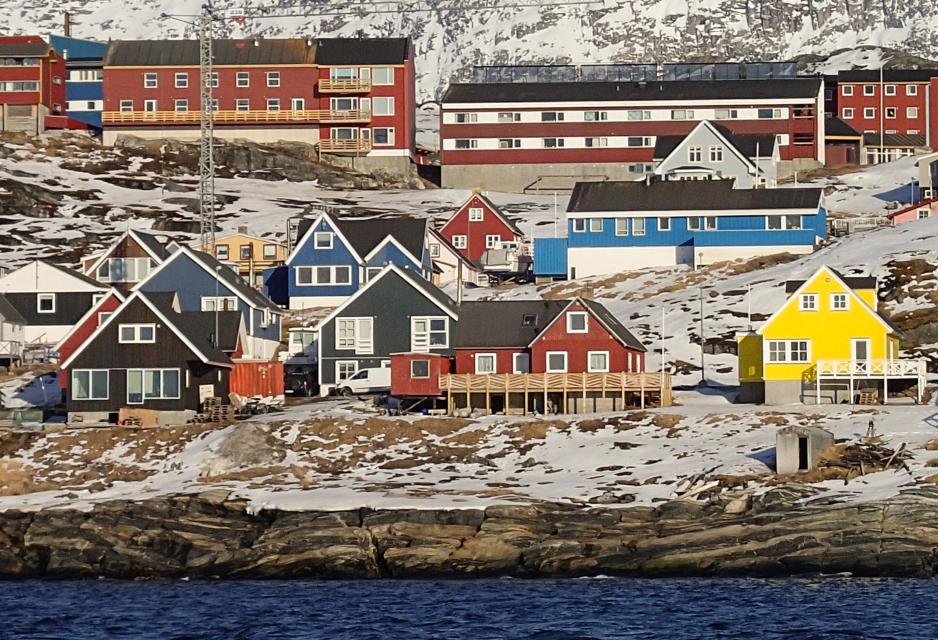Op-ed: Our High North Neighbor, Greenland

US Army Veteran and Historian Mike Thornton takes us through a brief overview of Greenlandic history in this op-ed. (Photo: Arne O. Holm)
Op-ed: US Army Veteran and Historian Mike Thornton looks at the history of Greenland amid increased US interest in the Arctic island.
This article is an opinion piece written by an external contributor. All views expressed are the author's own.
One of our most fascinating Viking ancestors, Eric the Red, landed on the large island to the West and called it Greenland to encourage others to travel there. This continues to cause visitors, new to the High North, some confusion as Greenland is not all green and Iceland is not all ice.
Like the story of most western conquest, the Paleo-Inuit had arrived much earlier, perhaps around 2500 BC. The Thule people arrived in the 9th Century AD and a series of other migrations occurred as well. Most consider today's Inuit to be descendants of people migrating over the land bridge from Alaska through Canada and finally to Greenland.
Northern Europeans have attempted settlements in the extreme Arctic of Greenland from time to time. However, only the strong were able to survive and prosper in these harsh conditions. The Inuit learned to cope, and today there is a growing interest in preserving Inuit culture and honoring their heritage.
Denmark established a permanent settlement near the present-day Nuuk in 1721. The Treaty of Kiel, in 1814, ended the Napoleonic Wars, and Greenland, Iceland, and the Faroe Islands were to remain in union with Denmark.
Who owns Greenland?
The issue of who “owns” Greenland is not new. Between 1931 and 1933, Norway contested the Danish possession of Greenland in court. The issue was a Norwegian settlement called Eirik Raudes (Erik the Red’s) land on the Eastern side of Greenland, settled in June 1931. The Court of Justice in the Hague ruled that, based on the Treaty of Kiel, Denmark was sovereign over the whole of Greenland.
Denmark was invaded on 9 April 1940, the following occupation resulted in uncertainty, what would happen to Greenland? Winston Churchill worried about possible Nazi control of Greenland and Iceland.
For a brief overview of Icelandic history see:
Greenland an unoccupied territory of an occupied nation
Both the U.S. and the Axis powers coveted the strategic location of the island. Before America was even at war, Denmark’s ambassador to the U.S. signed a “defense of Greenland treaty.” This gave the U.S. the authority to defend the island and to build military bases.
Meteorologists had already acknowledged that most weather patterns passed over Greenland on the way to Europe. This includes areas of high pressure and good weather in the summer, or the fierce North Atlantic storms. The Nazi’s stationed weather ships along Greenland’s coast and even came ashore to establish small weather stations.
Jumping the pond
Great Britain found itself at war with Nazi Germany and in need of American supplies and aircraft. Supplies would travel by sea, but aircraft could also be flown to Britain by a process that aircrews called "jumping the pond."
Recently manufactured aircraft could be flown to Canada and then across to Greenland, Iceland, and then Britain. Refueling was available, reducing each leg to approximately 850 miles. After the U.S. entered the war, the trickle of aircraft turned into a flood.
Several airfields were built and maintained in Greenland, the most famous of which was Bluie West 1 at Narsarsuak, which operated from July 1941 until September 1958. As many as 300-400 bombers a month, on their way to Europe, stopped in Greenland. The winter weather in the High North is always challenging, and numerous aircraft were lost to icing, snow, and storm-induced winds.
Bluie West 8 is the only wartime base still active. It became Thule AFB, and now it is Pituffik Space Base in the far Northwest of Greenland.
The Cold War
The end of World War II marked a transitional period until the onset of Cold War tensions. Denmark became a charter member of NATO, and U.S. aircrews returned to man and use Thule AFB.
For a brief discussion of the Cold War in the High North see:
The 1953 constitution of Denmark fully integrated Greenland into the Danish state, thereby ending its status as a colony.
Greenlanders today are Danish citizens and have two representatives in the Danish Parliament (Folketing). They enjoy a high degree of self-government, gaining self-rule in 1979. Denmark provides over $500 million annually in subsidies to Greenland, and an effort is underway to diversify the economy.
U.S. interest in Greenland
Concerning the recent U.S. fascination with Greenland, the country has had no greater supporter than the Prime Minister of Denmark, Mette Frederiksen. She has stated many times that the future of Greenland will be decided by the people of Greenland. She recently visited the island and demonstrated her support for Greenland and the results of the recent election.
In this uncertain world, we all need friends and allies.
Prime Minister Frederiksen said, “If we let ourselves be divided as allies, then we do our foes a favor. And I will do everything that I can to prevent that from happening.”
Later she added, if the U.S. wants to strengthen security in the Arctic, “let us do so together.”
It sounds like old-fashioned statesmanship, what a concept.


